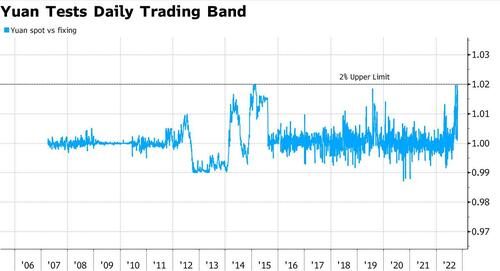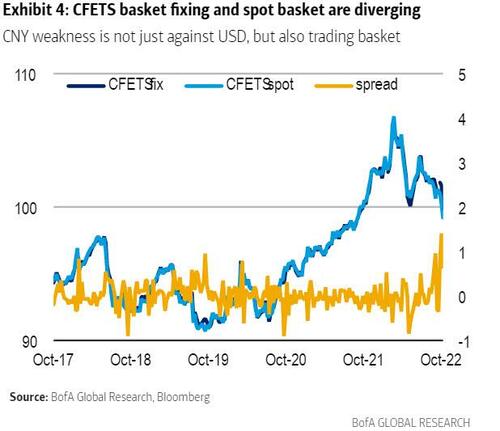China Lashes Out At Export Curbs In Blinken Call, Says US “Blinded By Ideology”
Chinese Foreign Minister Wang Yi lashed out over US export curbs in a Sunday phone call with his US counterpart Secretary of State Antony Blinken. The tense call underscored that significant obstacles remain as the two sides continue preparing for a potential Biden and Xi Jinping face-to-face meeting next month.
“The U.S. side should stop its containment and suppression of China and not create new obstacles to bilateral relations,” Wang said, base on a foreign ministry statement. “The US side introduced new export controls against China, restricting investments in China, seriously violating free-trade principles and seriously harming China’s legitimate rights and interests, which must be corrected.”
Additionally, per state media: “China’s diplomatic and domestic policies are open and transparent, and the US should not be blinded by ideology,” Wang said. The US was generally once again accused of suppressing China’s economic growth.
It was the first direct contact since Wang became China’s top-ranked diplomat, having been promoted to the Communist Party’s 24-member Politburo during its major meeting earlier this month.
Biden’s first ever sit-down meeting as president with President Xi is likely to happen at the Group of 20 meeting in Bali, Indonesia in mid-November. Washington efforts to restrict Chinese access to chipmaking technology, which it appears was a top pressing issue raised with Blinken by Wang, will likely be brought up by Xi as an area of deep contention later.
As for the US readout of the call, Blinken said the two agreed upon the need to “maintain open lines of communication” – with two main foreign policy issues also raised: Ukraine and Haiti. “The Secretary raised Russia’s war against Ukraine and the threats it poses to global security and economic stability,” an official US readout said. “The Secretary also noted the deteriorating humanitarian and security situation in Haiti and the need for continued coordinated action in support of the Haitian people.”
Currently, the US is attempting to put together a UN coalition that can lead a peace-keeping force into restive Haiti, at a moment the US-backed Acting President Ariel Henry is battling armed groups seeking his removal from power. China and Russia have signaled they would veto such a resolution at the UN Security Council, seeing in it another attempt at US-Western intervention in a foreign country’s internal affairs.
As for the Russia-Ukraine conflict, President Xi while entering a third term as China’s most powerful leader in decades is expected to deepen relations with Russian President Vladimir Putin.
As a further sign of China’s growing willingness to stand behind Moscow even while Putin faces unprecedented global isolation over the war…
Hong Kong’s Cathay Pacific to restart use of polar route flight path over Russia after it was axed in March because of invasion of Ukraine https://t.co/bCL9RXofxF
— South China Morning Post (@SCMPNews) October 30, 2022
Last week, Reuters cited Wang’s words describing Beijing’s future outlook on its relationship with Russia as follows, “China is willing to deepen its relationship with Russia in all levels and any attempt to block the progress of the two nations will never succeed.”
“It is the legitimate right of China and Russia to realise their development and revitalisation, Wang Yi said in a telephone call with his Russian counterpart Sergei Lavrov,” the report noted.
Tyler Durden
Mon, 10/31/2022 – 20:45
via ZeroHedge News https://ift.tt/vpLWOM3 Tyler Durden





